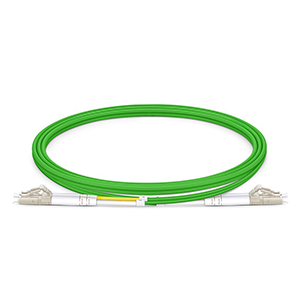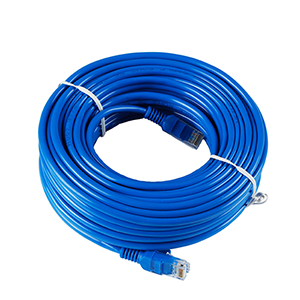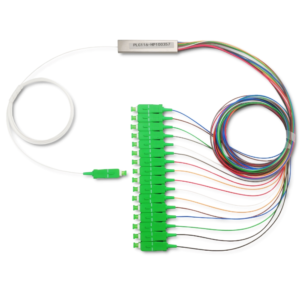UTP network cables play an important role in modern networks. This article will explore the categories of UTP network cables suitable for 10 Gigabit Ethernet. We will first define the basic structure and characteristics of UTP network cables and explain their main classification standards.
Next, we will compare and analyze different categories of UTP network cables such as Cat5, Cat5e and Cat6 to understand their differences in the maximum transmission rate, transmission distance and bandwidth they support. Then, we will introduce the main characteristics of 10 Gigabit Ethernet and point out its higher requirements for network cable performance. Finally, we will focus on the categories of UTP network cables that support 10GbE – Cat6a and Cat7, and compare their differences in transmission distance and other aspects.
What is UTP network cable
UTP (unshielded twisted pair) network cable is a commonly used network cable consisting of multiple pairs of twisted pairs for transmitting data and signals. It has the advantages of low cost and easy installation, and is widely used in Ethernet and telephone systems, but has low anti-interference ability.
1. Structure and characteristics of UTP network cable:
- UTP (Unshielded Twisted Pair) network cable adopts unshielded twisted pair design.
- Each UTP network cable consists of 4 pairs of twisted copper core wires, covered with insulation layer and sheath.
- UTP network cable has simple structure and low cost, and is widely used in LAN environment.
2. Main classification standards of UTP network cable:
UTP network cable can be divided into the following main types according to performance and application scenarios:
- Cat5 (Category 5) network cable: supports 10/100Mbps Ethernet transmission.
- Cat5e (Category 5 enhanced) network cable: supports 10/100/1000Mbps Ethernet transmission.
- Cat6 network cable: supports 10/100/1000Mbps Ethernet, and has better transmission bandwidth and anti-interference performance.
- Cat6a (Category 6 augmented) network cable: supports 10Gbps Ethernet transmission.
- Cat7 network cable: supports 10Gbps Ethernet, and has higher bandwidth and better shielding performance.
Different types of UTP network cables differ in transmission rate, bandwidth, anti-interference, etc., and are suitable for different network application scenarios. In general, UTP network cable is a simple and practical wiring solution widely used in wired networks. Its classification standards reflect the performance requirements in different network environments.
Performance comparison of different UTP cable categories
Different UTP cable categories such as Cat5e, Cat6 and Cat6a have different performances. Cat5e supports up to 1000Mbps, Cat6 supports 1000Mbps and has better anti-interference, while Cat6a can support 10Gbps and provide a longer transmission distance, suitable for high-speed network needs.
1. Comparison of the main parameters of UTP cable categories:
| Network cable category | Maximum transmission rate | Maximum transmission distance | Bandwidth |
| Cat5 | 100Mbps | 100 meters | 100MHz |
| Cat5e | 1000Mbps (Gigabit) | 100 meters | 100MHz |
| Cat6 | 1000Mbps (Gigabit) | 100 meters | 250MHz |
As can be seen from the table above:
- Cat5 network cable supports 100Mbps Ethernet, and the transmission distance and bandwidth are relatively low.
- Cat5e and Cat6 network cables both support 1Gbps Ethernet transmission, but Cat6 has a larger bandwidth.
2. Application scenarios of various UTP network cables:
- Cat5 network cable is suitable for 100Mbps Ethernet environment, such as early LAN deployment.
- Cat5e and Cat6 network cables are suitable for 1 Gigabit Ethernet environment, which can meet the needs of higher bandwidth and speed.
- Cat6 has better performance than Cat5e and is more suitable for new or upgraded high-speed networks.
In general, different types of UTP cables have differences in key parameters such as transmission rate, bandwidth and transmission distance. You need to choose the appropriate cable category according to the actual network environment and needs. This directly affects the performance and reliability of the network.
Technical requirements of 10 Gigabit Ethernet
10 Gigabit Ethernet requires high bandwidth and low latency, and usually uses optical fiber or high-quality copper cable (such as Cat6a or Cat7). Optical fiber supports longer transmission distances and is suitable for data centers and backbone networks, while copper cables are suitable for shorter distances. High-speed connections. Equipment needs to support the 10G standard to ensure compatibility.
1. Main features of 10GbE Ethernet:
- 10GbE Ethernet supports a maximum transmission rate of 10Gbps, which is 10 times that of Gigabit Ethernet.
- Compared to previous Ethernet standards, 10GbE has higher requirements for network cable performance.
2. 10GbE network performance requirements for UTP network cables:
In order to support the high-speed transmission of 10GbE Ethernet, UTP network cables need to meet the following performance requirements:
(1) Good anti-interference and isolation performance:
- 10GbE networks are more sensitive to signal interference and electromagnetic radiation.
- UTP network cables need to have excellent shielding and isolation capabilities to suppress signal distortion.
(2) Larger bandwidth and transmission distance:
- 10GbE networks need to support larger transmission bandwidths, requiring network cables to have higher frequency bands.
- At the same time, it is also necessary to support longer transmission distances to meet the needs of wide coverage applications.
Therefore, UTP cables that support 10GbE Ethernet usually need to meet the performance standards of Cat6a or Cat7 to meet the technical requirements of high-speed networks. In short, 10GbE Ethernet has higher requirements on the performance of network cables than previous Ethernet standards, which has also promoted the continuous advancement and optimization of UTP network cable technology.
UTP network cable categories that support 10 Gigabit Ethernet
The main categories of UTP network cables that support 10 Gigabit Ethernet are Cat6a and Cat7. Cat6a can support 10Gbps transmission within a distance of 100 meters, and Cat7 provides higher shielding and longer transmission distance. They have better anti-interference performance and are suitable for high-bandwidth application requirements.
1. Cat6a and Cat7 cables:
To meet the high-speed transmission requirements of 10GbE Ethernet, UTP cables need to meet higher performance standards. The main categories of UTP cables that support 10GbE include:
- Cat6a (Category 6 Augmented) cables
- Cat7 cables
Both cables can support 10Gbps Ethernet transmission, and the performance requirements are higher than Cat5e and Cat6 cables.
2. Differences between Cat6a and Cat7 cables:
Cat6a and Cat7 cables have the following main differences in performance indicators:
(1) Transmission distance:
- Cat6a cables support a maximum transmission distance of 55 meters.
- Cat7 cables support a maximum transmission distance of 100 meters.
(2) Bandwidth:
- Cat6a cables support a maximum bandwidth of 500MHz.
- Cat7 cables support a maximum bandwidth of 600MHz.
In general, although both Cat6a and Cat7 cables can meet the transmission requirements of 10GbE Ethernet, Cat7 cables have a slight advantage in transmission distance and bandwidth. Users can choose the appropriate cable category according to the actual deployment scenario. No matter which one is chosen, Cat6a and Cat7 can provide better 10GbE Ethernet transmission performance and reliability compared to the earlier Cat5e and Cat6 cables.
Summary
Choosing high-performance UTP cables for 10 Gigabit Ethernet is critical to building a high-speed network. Our company has long been focusing on the research and development and application of cable technology and has rich practical experience. We provide a full range of UTP cable products such as Cat6a and Cat7 to meet the needs of different 10GbE network environments.
Our UTP cable products use industry-leading technical solutions and have achieved excellent levels in transmission performance, reliability and anti-interference. At the same time, our engineering team will provide you with professional demand analysis and solution design services to ensure that the deployed UTP network cable solution can meet your actual needs to the greatest extent. Contact us now to learn more.
UTP Cable FAQs
Category 6a (Cat6a) UTP cables are suitable for 10 Gigabit Ethernet. They are designed to support 10 Gbps speeds over distances up to 100 meters.
Cat6 cables support speeds up to 1 Gbps at 250 MHz, whereas Cat6a cables support 10 Gbps speeds at 500 MHz. Cat6a also has better shielding to reduce crosstalk and interference.
Cat5e cables are not suitable for 10 Gigabit Ethernet. They are typically rated for speeds up to 1 Gbps. For 10 Gbps performance, Cat6a or higher-category cables are required.
The maximum distance for 10 Gigabit Ethernet over Cat6a cables is up to 100 meters (328 feet).
Yes, Category 7 (Cat7) and Category 8 (Cat8) cables also support 10 Gigabit Ethernet. Cat7 supports 10 Gbps at up to 100 meters, while Cat8 can support higher speeds and is designed for shorter distances.
Cat6a provides better performance with reduced crosstalk and interference, supporting 10 Gbps speeds over longer distances (up to 100 meters) compared to Cat6.
While Cat6 cables can handle 10 Gigabit Ethernet, they are only reliable for distances up to 55 meters (180 feet). For longer distances, Cat6a is preferred.
Cat6a cables support a maximum frequency of 500 MHz, which is necessary to maintain the signal integrity required for 10 Gigabit Ethernet.
Yes, Cat7 and Cat8 cables are backward compatible with Cat6a. They can be used in systems that support Cat6a, but they also provide higher performance and shielding.
Cable shielding, such as that found in Cat6a, Cat7, and Cat8 cables, helps reduce electromagnetic interference (EMI) and crosstalk, improving the performance and reliability of 10 Gigabit Ethernet connections.




